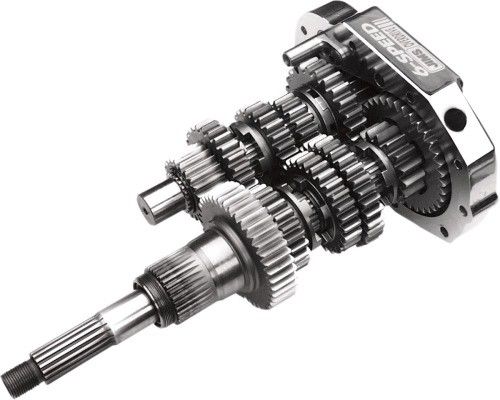The Black Ink Team’s Guide To How Manual Transmissions Work
by Black Ink Team
Unlike cars, most motorcycles have manual transmissions. This is because most motorcyclists tend to prefer having as much control over their bike as possible, and feel that automatic systems can get in the way or take away part of the fun. How do manual transmissions work, you ask? Read on and you will soon find out.
Whether your motorcycle or car has a manual or automatic transmission, the part’s job is the same: connecting the engine to the wheels. The difference is that, with a manual transmission, you select the gear that you want your vehicle to be in at any given point, hence ‘manual.’ Automatic transmissions change gears on their own, hence ‘automatic.’
The most important part of a manual transmission is the clutch. The clutch engages and disengages the engine from the wheels - in other words, when the clutch is ‘in’ you can rev the engine all you want without spinning the wheels, but when the clutch is ‘out’ that is when you are delivering power. When you start something that has a manual transmission, you need to start it either with the clutch in or with it set to neutral.
Whichever gear you want to be in depends on several factors. Low gears are for getting up to speed, or going up steep inclines. The lower the gear, the slower you go when the engine is revving at any given RPM and the clutch is out. Also, the lower the gear the faster you accelerate. Changing up a gear naturally makes you go faster, without the need to apply the accelerator, but the speed at which you accelerate will be slower than when you were in the gear you were previously in. Conversely, changing down a gear makes you go slower, but you can then accelerate faster.

Executing a gear change when driving something that has a manual transmission starts with you putting the clutch in. This disengages the engine from the wheels, which allows you to change gears without grinding them. Once you select your new gear, you can let the clutch out. Voila!
Trying to stop a vehicle that has a manual transmission completely without putting the clutch in will cause you to ‘stall’. Also, you can stall by switching to a higher gear when you are not moving at a high enough speed. This is because you are giving the engine has too much load. To properly stop a vehicle that has a manual transmission completely, therefore, you have to put the clutch in.
Gears are selected on motorcycles with the left foot. The left handle usually is the one that controls the clutch. Some motorcycles have reverse gears, especially heavy ones, but not all of them that do operate in the same way. Sometimes the reverse gear has to be engaged in a separate way than the standard gears, for example it may be a switch beneath the starter.
Now that you have the knowledge that will let you drive things that have manual transmissions, use it wisely. With great power comes great responsibility.
